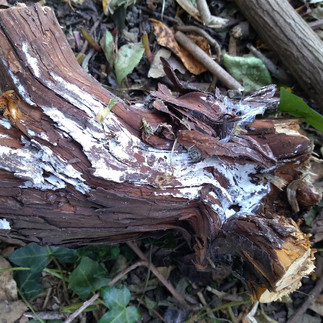Resisting a rest
- susankavanagh
- Sep 21, 2021
- 3 min read
The last couple of months have been busy, both in the garden and for life in general. But a long-awaited operation last week (carpal tunnel release surgery) has left me forced to take a back seat for a few days.
It's frustrating: I can't drive at the moment (although to be fair the carpal tunnel meant I couldn't do much driving for several months before that either), and every time I venture out into my garden I spot things I want to weed or prune. Hopefully I'll be back to normal soon, but in the meantime this is the perfect opportunity to post an update.
I've decided to change my format a bit, focusing on key changes rather than everything in my garden. So here goes...
Preserving my Pride
This year I have become guardian to a couple of VIPs (Very Important Plants, of course!). A former President of my local gardening club - John Bridgland - bred fuchsias, only a handful of which are still commercially available.
One of our long-standing members is in possession of two varieties which can no longer be purchased: Catisfield Pride (below left) and Charleston (below right). Over recent months he noticed a virus had started to attack some of his fuchsias and he was keen to preserve these rare specimens. So I took delivery of a couple of apparently healthy cuttings.
Initially I feared the worse when some dark patches appeared on their leaves. But any infected sections were rapidly removed and destroyed and the plants now seem to be healthy. I've even started off my own cuttings and hope to be able to distribute these a bit more widely in the local area, thus keeping John's legacy alive.
Both of these are tender varieties, which are new to me as I've previously only had hardy fuchsias, but I will do my best to keep them alive and healthy. Personally my favourite is 'Charleston', with 'Catisfield Pride' being a little too flouncy for my taste.
A fruitful enterprise
The other big change since my last post has been the demise of one of my wild areas.
Close to the side entrance to my garden I have long-tolerated a patch of ground elder interspersed with brambles, lords-and-ladies and with a mature escallonia 'Rubra' overlooking it. I've been telling myself this was because ground elder leaves are a potential spinach substitute, allegedly very popular in Roman times, but in practice I've never used it as a vegetable.
Last month I noticed some fungal damage on the escallonia leaves. Pruning these away I found that the fungus had also affected the woody parts of the shrub, many of which were so rotten that they broke away in my hand. I don't think it was honey fungus but it was clear that the plant needed to go, and I decided I might as well tackle the whole area while I was at it. I was extremely thorough, digging out as many roots as I could find.
Above left to right: the escallonia in happier times, infected leaves, infected wood
As to what I would put in its place, that was easy. I have a large number of fruit bushes in pots, and some of the larger ones - particularly a cherry bush 'Porthos' - were outgrowing their containers. I also had a new plant, blackberry 'Karaka Black', which I won in a giveaway and needed to find a home for. I didn't really want to train the blackberry in the traditional horizontal espalier form because the only place I had sufficient width for that was on the southern edge of the area, which would have put most of it into shade, so instead I purchased a metal arch to train it over. The cherry was duly planted along with a couple of blackcurrant bushes, and I'll be adding some raspberry canes once the autumn varieties have fruited for this year. It looks a little bare at the moment but should soon fill out. I also intend extending the stepping stone path - another new addition this summer - to create an alternative entry route through the arch and between the fruit bushes over the next few months.
Above left to right: the area to be cleared is to the right of this path, after clearing, with arch and plants in place

















Comments